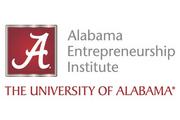
If you have not heard the term employee resource group (ERG), don’t be surprised. Although these groups have been in existence since the 1960s, and interest in them is on the rise, a large population of people have not heard of them. Part of the reason is that these groups also are known by other names including affinity groups, business resource groups, employee networks and now even more customized names.
A definition of ERGs is that they are purpose-driven employee volunteer organizations, sanctioned by the business, to pursue diversity goals as well as other business objectives. ERGs can be broken down into three different types: 1) social-cause centered ERGs, 2) professional-centered ERGs, 3) attribute-centered ERGs, and also today there are ally groups that are part of or complement ERGs. I will say more about the specific types of ERGs in these categories later.
Journey from the first Black Caucus to ERGs and BRGs
The precursor to today’s ERGs started in Rochester, New York, where the first “modern” race riot occurred in our country. In 1964 and in response to the riots, the CEO of Xerox created something he called the Black Caucus. This caucus was formed to help Black employees create a more positive environment in the community and at Xerox; the goal was changing the conditions that started the riots in the City.
Over time, and after Title VII was passed, organizations started creating affinity groups that were very similar to the Black Caucus, but these internal company organizations served other groups such as women, veterans, Hispanic/Latino, Asian/Pacific, the disabled, and more. The goals of these grassroots and volunteer-led ERGs were to help create a more inclusive workplace where individuals who were under-represented could support each other and educate other organizational members about their groups. These affinity groups helped support educational programs during months or days that celebrated their heritage, and they were seen as part of the diversity initiatives in companies.
Over time, the groups started to engage in a variety of innovation and business or customer-focused projects. One of the auto companies that I worked with teamed up with their India affinity group to help with the design of cars meant to be sold and driven in India. Leaders found they could learn from their own employees and the families of their employees through the ties to the internal affinity groups. As the purpose of the affinity groups changed so did their name. Most companies moved to a term that is some version of employee resource groups in an effort to recognize these teams were a resource to the business.
Yet again, one more evolution happened. ERGs started to be formed based on criteria not related to a person’s demographic-focused identity. Companies started ERGs for things like sustainability, wellness, faith-based, innovation, childcare and elderly care, and more.
As of 2021, 90% of Fortune 500 companies had ERGs. Today, we see them prevalent in large and smaller organizations. Since 2012 I have run an annual conference with ERG leaders, and last year we had attendees from large firms such as Amazon, HP, Bank of America, Mount Sinai, Nationwide and relatively newer firms such as Zillow, Experian, and Zendesk. Over the last two years, the addition of ERGs to companies large and small, in the United States and outside, has increased in response to the growing need to help improve diversity, equity, equality, inclusion and/or belonging in businesses. ERG leaders have deep ties into companies through their membership. Members of ERGs are not only people who are part of the ERG but also include allies who are individuals who want to support a specific group.
The structure of ERGs varies from company to company. The least complex structure has ERGs reporting to a diversity or HR department, while many businesses have separate diversity and ERG councils that are set up for reporting and leadership purposes. In larger complex organizations, there are not only distinct types of ERGs but also within an ERG there can be multiple chapters. We have seen companies with as many as 80% of their employees in at least one ERG, or firms with newer ERGs may have only 10% of the employees involved at earlier stages.
The rise of business resource groups and the movement to innovate
ERGs can be a support system to help a leadership team. In fact, today you are more likely to see the term business resource group (BRG). This change in name is due to their work being focused on helping leaders build strong relational capital, including meeting diversity goals, but they also are working hard to drive business goals, including innovation where they have been powerfully successful. Some examples include Frito Lay’s Hispanic / Latino ERG inventing the guacamole chip (and later more snacks) as well as Amazon’s Textures and Hues site, focused on hair products for women of color.
How ERGs drive innovation
I have been studying ERGs for over 15 years; I have been fortunate to obtain a lot of data from the annual ERG Leadership Summit that I organize and have held since 2012. This learning event brings together ERG leaders from multiple companies; the goal is learning and sharing together because there is very little data or research on what these important organizations do and how they work. Over time, we’ve done large-scale studies within companies and across organizations; the data has been very helpful in digging into why ERGs seem to be helping their organizations innovate.
Collision theory of ERGs
In chemistry, collision theory states that molecules must collide to get a reaction. The ERG process starts within groups of similar people, building confidence, but then they venture out and collide. It is the collision that generates energy to innovate and continually improve.
The concept of ERGs is counterintuitive. Companies are creating groups where employees are alike and in silos. A common reaction to ERGs is: “How does this improve diversity or anything else?”
What we have learned from the research is that by employees doing volunteer work with groups of people with whom they strongly identify (in an ERG) employees build confidence. We also see employee engagement and personal energy at work are higher for ERG members. These data are consistent and found across multiple organizations in numerous countries. Being in an ERG improves individual performance and confidence.
Doing the work that ERGs do results in members learning to innovate. Innovation and confidence result in different types of ERGs working together; thus, when they cut across ERGs or teach in company-specific events with larger audiences the silos break down. When ERGs work together, they meet people who are not like themselves, exposing them to new ideas, which helps fuel their ability to innovate. Lastly, after seeing the effects of ERGs on innovation within their ERGs, we have data showing that ERG members bring back the ability to innovation to their :day jobs.” Thus, ERGs, often unknown to many leaders, are a movement that is sparking and spurring innovation.
Innovating in Alabama: Entrepreneur resources groups (new ERGs)
In Alabama, we are starting a new initiative to move the learning from corporate ERGs to our incubators and accelerators. Look for more on this topic as we roll out the initiative. However, for now I can say that we are creating the first entrepreneur resource groups.
AEI, The EDGE, Innovation Depot and Innovation Portal are partnering to start our own entrepreneur resource groups and leverage them across our Alabama incubators. This work will impact the success of less represented entrepreneurs and help them via the same processes that corporate ERG members use, which are networking, developing new skills, educating the entire entrepreneurial ecosystem about their groups, and overall growing confidence, innovation, and their own personal and business success. All of our entrepreneurs will benefit from learning the importance of diversity, equity, and inclusion early in their careers, taking these core values with them to their own organizations. This is while also leveraging the deeper relationships they will have to help drive ongoing innovation and growth.
Anyone interested in learning more about corporate ERGs or entrepreneur resource groups can contact me for more information.
